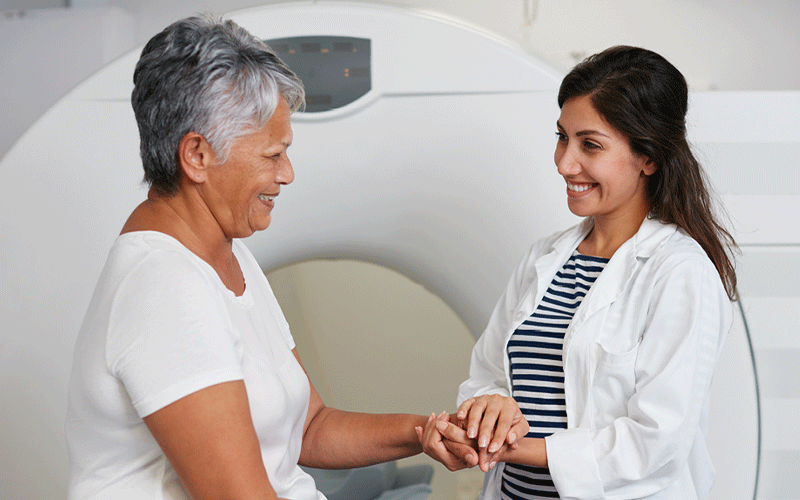Addressing the Unique Imaging Needs of Older Patients
As the population ages, radiology will be in high demand for patients with challenges related to imaging

RSNA News highlights the role radiology plays in supporting the imaging needs of the aging population. This is the second in a series of stories. Read the first and third story.
By 2030, approximately 20% of all Americans, or about 70 million people, will be 65 years or older. This population currently uses about 30% of imaging resources each year and that usage is increasing, which is why it is important for all radiologists to understand the needs, findings and risks for geriatric patients.
“Geriatric patients often have a lot of health issues beyond the first finding,” said Sirui Jiang, MD, PhD, diagnostic radiology resident at University Hospitals Cleveland Medical Center in Ohio. “They often require more time and care from their doctors and radiologists.”
Dr. Jiang presented a poster at the 2023 RSNA Annual Meeting entitled, Imaging in Sexagenarians and Beyond: What Clinicians Want to Know and What Radiologists Need to Know.

Common Findings In Geriatric Patients
Elderly patients who require imaging often have several unique considerations that are important to recognize, but there are also common findings, according to Dr. Jiang.
Some of the most common reasons older patients present at the emergency department are chest pain, trauma, shortness of breath, gastrointestinal pain or altered mental status.
For patients reporting head and neck concerns, common findings include subdural hematomas following a fall or accident, vascular calcifications or cerebral atrophy.
In chest imaging, common findings can include, rib fractures, emphysema, coronary and valvular calcifications, lung or esophageal primary malignancies or acute or chronic lung infection. For patients who require abdominal imaging, common findings can include chronic renal failure, steatosis, chronic cystitis, pancreatic issues and adrenal issues, such as insufficiency, hyperplasia or atrophy.
Imaging older patients with pelvic pain can uncover prostate issues or diverticulitis, while musculoskeletal imaging can identify osteopenia, multiple myeloma, osteoarthritis and vertebral compression fractures.
Unique Needs Of Geriatric Population
Common pathologies in older patients may be confounded by multiple comorbidities, Dr. Jiang commented, and health care providers need to consider the adverse effects of treatments such as antibiotics and chemotherapies in these patients.
“For example, if a young patient comes into the emergency room with diverticulitis, they may go home with antibiotics and recover,” Dr. Jiang said. “However, a geriatric patient who is otherwise immunocompromised is at higher risk of secondary complications such as abscess formation and may need a different course of treatment.”
Imaging elderly patients requires a complex, multidisciplinary approach. Dr. Jiang hopes that further study of the imaging needs of this population will encourage health care institutions to implement some new practices.
“Patients could benefit from a ‘geriatric coordinator,’ who could act as a project manager for their case, coordinating with other specialists and taking an overview of the patient’s care to catch areas where imaging could be more effective or where more multidisciplinary care is required,” Dr. Jiang said. “It’s about time we think about this population more specifically because the geriatric population and their radiology needs are only going to increase over time.”
For More Information
Log in to EdCentral to explore RSNA 2023 digital presentations, including education exhibits and quality improvement reports.
Read previous RSNA News stories on imaging of unique populations:
- Radiologists at the Frontline of Preventing Elder Abuse
- Lung Nodules Seen in a High Percentage of Non-Smokers
- Closing the Breast Cancer Screening Gap for Uninsured Patients